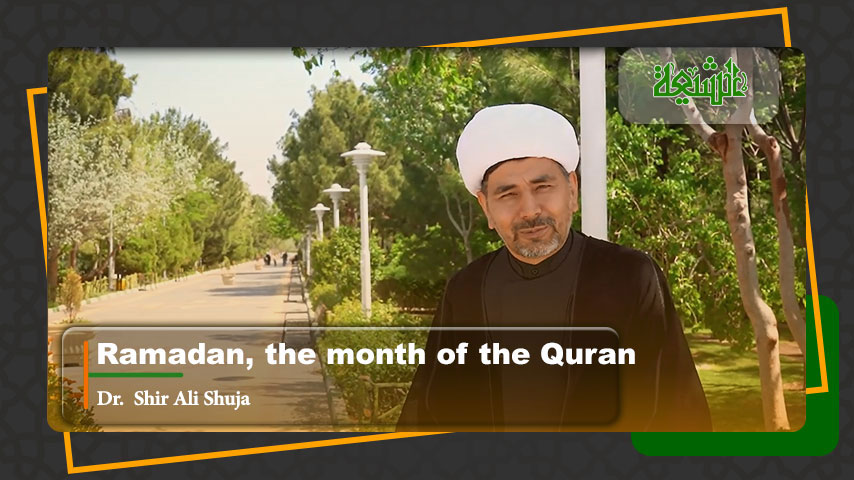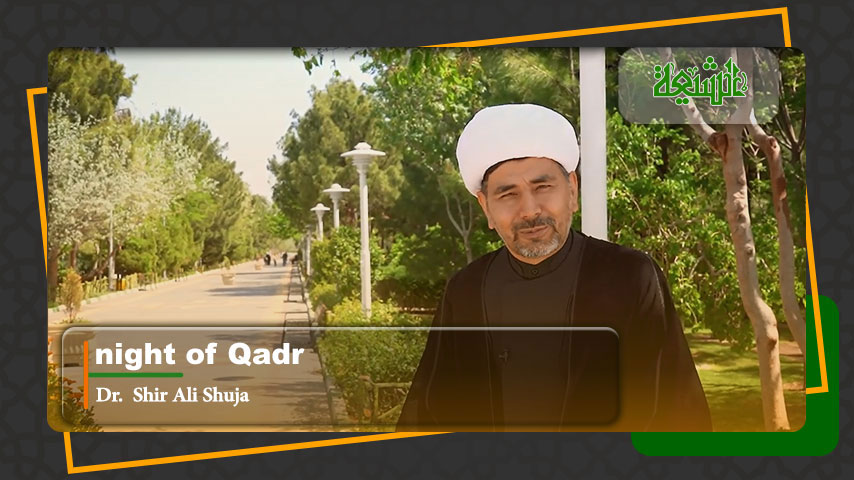The history of the Shia and Christian cultural relations is comparatively old. Of these relations may be mentioned inter-religious dialogue in the area of theology (i.e. Kalam) that took place in a spirit of complete mutual understanding.
In the works of the Shia, this is discussed in detail. Among such dialogues, one may refer to discussions between the spiritual leaders of the two creeds, particularly dialectic between the Muslims and Catholicons, preserved in the oldest Shii books.
The commentators of hadith have explained Catholicons in the following manner: “Catholicons is the greatest spiritual leader of Christianity of every age.” Most probably this word is the same as Catholic in the present sense, though for an author, it is difficult to say which term is an alternative to the other.
1) Muhammad bin Ali bin Babwayh al-Qummi, known as al-Shaykh al-Saduq (d. 280/901 A.D.), has recorded four polemical discussions between the highest spiritual leader of Christians and Shia scholars of eminence and theologists in his works.
It is probable that the dialogue of Catholicons with Imam Ali (PBUH) took place during 657 A.D.(1) But the culminating point of these controversies has been during the early 10th century A.D.,(2) i.e., in the 2nd century Hijrah, during the periods of Imam al-Sadiq (PBUH) and Imam Al-Reza (PBUH),(3) the 6th and 8th Imams of the Shia.
2) Another point that is indicative of the close cultural relations between the Shia and Christianity is the recording of the sayings, characters and biographical accounts of Christ in the books of the Shia, which surpasses all such accounts of Christ in the works of all other sects of Islam.
It is noteworthy that the name of Hazrat Isa has occurred in the Quran 25 times and the name of Messiah (PBUH) recurs 36 times in the Quran. And the circumstances of his birth and his way of preaching and his ascension are repeatedly narrated in the Quran.
But despite this emphasis, the books of non-Shii authors do not contain detailed accounts of Christ’s sayings and character. For instance, in Sihah al-Sittah (i.e., six authentic compendia of hadith of Ahl al-Sunnah), we do not come across even a single utterance of Christ.
On the other hand, in the books of the Shia, even some of the oldest, utterances of him are found in abundance. Imam Ali (PBUH), the first Imam of the Shia narrated the ascetic style of the life of Christ in one of his sermons, given under No. 160, in Nahj al-Balaghah.
After him, in the 2nd century A.H., Imam al-Sadiq quoted the preaching of Christ, as found exactly in the Bible of Mathew, while delivering his advice to Abdullah bin Jandab in New Testament, book of Mathew, chapter 6, sentences 2,3,6,7,16 and 18.
During the period from the 2nd to the 4th century A.H., al-Jahiz, in al-Bayan wa al-Tabin, nine short sayings and one detailed speech of Christ were recorded.
During the middle of the 4th century an eminent Shii author, Abu Muhammad Hasan bin Ali bin al-Husayn bin Shubah al-Harani (d. 38 A.H. = 1001 A.D.) in his book, Tuhf al-Uqul an Al al-Rasul, had devoted about 16 pages to record the sayings of Christ. These utterances consist of two parts: the first, which is briefer, second, which is comparatively detailed, quote parts of Christ’s sermons.
According to the research done in this regard, the same words are accessible to us at present, in some of the Book of New Testaments). For example, one may refer to the following:
Book of Mathew, sentences 1-7, 14-17 and 44-45 in chapter 5, sentences 12-19, 24, 30 in chapter 6, sentence 16 in chapter 7, and 29-36 in chapter 22; Book of Luke, sentences 17-49 in chapter 6; 44-45 in chapter 6, 4-17 in chapter 8 and 37-53 in chapter 11; Book of Mark, sentence 30 in chapter 12.
Ibn Shubah was a resident of Harran and since Harran was a centre of learning for the Christians, he had access to a majority of the Christian primary source. Of course, most of the sentences that Ibn Shubah has quoted are specifically from the books of Mathew, Luke and Mark. It remains unknown why he has not quoted from all the books of the New Testament.
However, it is a distinct feature of the Shii works that they have been forerunners in the matter of referring to and quoting profusely from the sayings and sermons of Christ as compared to all other Muslim sects.
3) In the books of the Shia special attempt has been made to deal with the life and character of Jesus Christ (PBUH)]. In sermon 159 in Nahj al-Balaghah, Imam Ali (PBUH), while highlighting the piety of great prophets, writes about Jesus Christ: “Hadrat Masih (PBUH) laid his head on a stone, put on the dress made of coarse material, took tough food.
His main diet was hunger, at night the moon provided him only light; during winter he slept under the sun at times when it shone or set down; his fruit and vegetable was none other than what the earth grows for animals.
He neither had a wife that could instigate him to do follies nor did have a child that could make him sorrowful with concern; nor had any property which might have taken away from him; nor had he any kind of greed (for worldly things) that could cause him humiliation.
He had no means of moving except his own feet, his servants were his own hands.” On another occasion, addressing one of his companions, Imam Ali (PBUH), says:
“Blessing be on those pious persons who have turned away from the worldly attachments like Christ.”
4) Mutual Influences in Kalami (Theological) Polemics. As it is generally accepted by researchers and scholars that Islamic Kalam has exercised influence on Jewish and Christian Scholasticism.
In a similar way, it is also incontrovertible that on the land the views of Muslim theologians, with regard to the Divine Attributes, in the course of their polemics and discussions with the Christian scholastics, particularly in the issue of the trinity have developed and attained maturity of thought. (4)
Undoubtedly, the use of the term Attribute (sifat) and the emergence of the concept of universal (kulliyat), during the medieval period of Christianity, through the Latin translation of the work of Ibn Hayman, Hidayat al-Mudallin (A Guide for Wayward) (530-601 A.H./1135-1204 A.D.),(5) were influenced immensely by Islamic Ilm al-Kalam.
He and before him Sadiya Gawun (Said al-Fayumi – 271-331 A.H./892-922 A.D.), had acquired their knowledge of Greek philosophy indirectly from Arabic translations and their Islamic commentaries. They themselves wrote in Arabic (which was the academic language of that period).
The ground conducive for the acceptance of the teachings of Muslim theologians, particularly al-Ghazzali, through Sadiya, who might be justifiably regarded as Ashairah of Judaism, for he not only adopts the method of Ashariyyah but also in specific issues, makes use of their arguments.
Yahud Ahlawi from Toledo, born in 479 A.H., who was a contemporary of al-Ghazzali, like him felt that philosophy in questioning the fundamentals of faith by interpreting them on the basis of logical argument results in weakening of the creed.
With this view, he embarked upon writing a book on refutation of philosophers, entitled al-Khazari, (6) briefly called Khazri. Yahud-e Ahlawi, in his book, Logical and Philosophical Jargons, followed the same method and arguments that were advanced by al-Ghazzali against philosophers.
Much more than him another scholastic thinker of the Jewish creed, Hasdai Karaska was undoubtedly influenced by Tahafut al-Falasifah of al-Ghazzali though Wolfson, the Professor of Harvard University, rejects this view, arguing that Tahafut al-Falasifah was translated into Hebrew after the death of Karaska. (7)
His argument seems to be baseless, for Tahafut al-Tahafut by Ibn Rushd was translated before 729/1328 by Qalunimus bin Dawud and was published under the title Hapatlat Hapala, while Karaska died in 814/1210.
Even on this ground if we accept that there was no possibility of his direct access to the arguments of al-Ghazzali, forwarded in Tahafut al-Falasifah, it may be conjectured that undoubtedly he could have possibly referred to al-Ghazzalis arguments by means of the translation of Al-Ghazali’s Tahafut al-Falasifah.
This paper was presented at the conferences of Islam and Orthodox Christianity in the month of Shahrivar 1373 (September 1994), in Tehran by the Center of International Studies and Culture.
To be continued!
NOTES:
________________________
1. Al-Shaykh al-Saduq, Tawhid, pp.182, 286, 361.
2. Ibid., pp.270, 417, 420.
3. Ibid., p.422.
4. Harrani Ibn Sh`ubah, Tuhfat al-`Uqul, Tehran, 01.
5. For more information, please refer to the book: History of Medieval Jewish Philosophy, by Howzile, New York, 1930. p.24.
6. The original title of the book is: Al-Hujjat wal-Dalil fi Nasr al-Din. Please refer to Hartwig Mirschefeld, Kitab al-Khazri, London, 1931, p.6.
7. Wolfson, Crasxa’s Critique of Aristotle, Harvard, 1929, p.12.
















